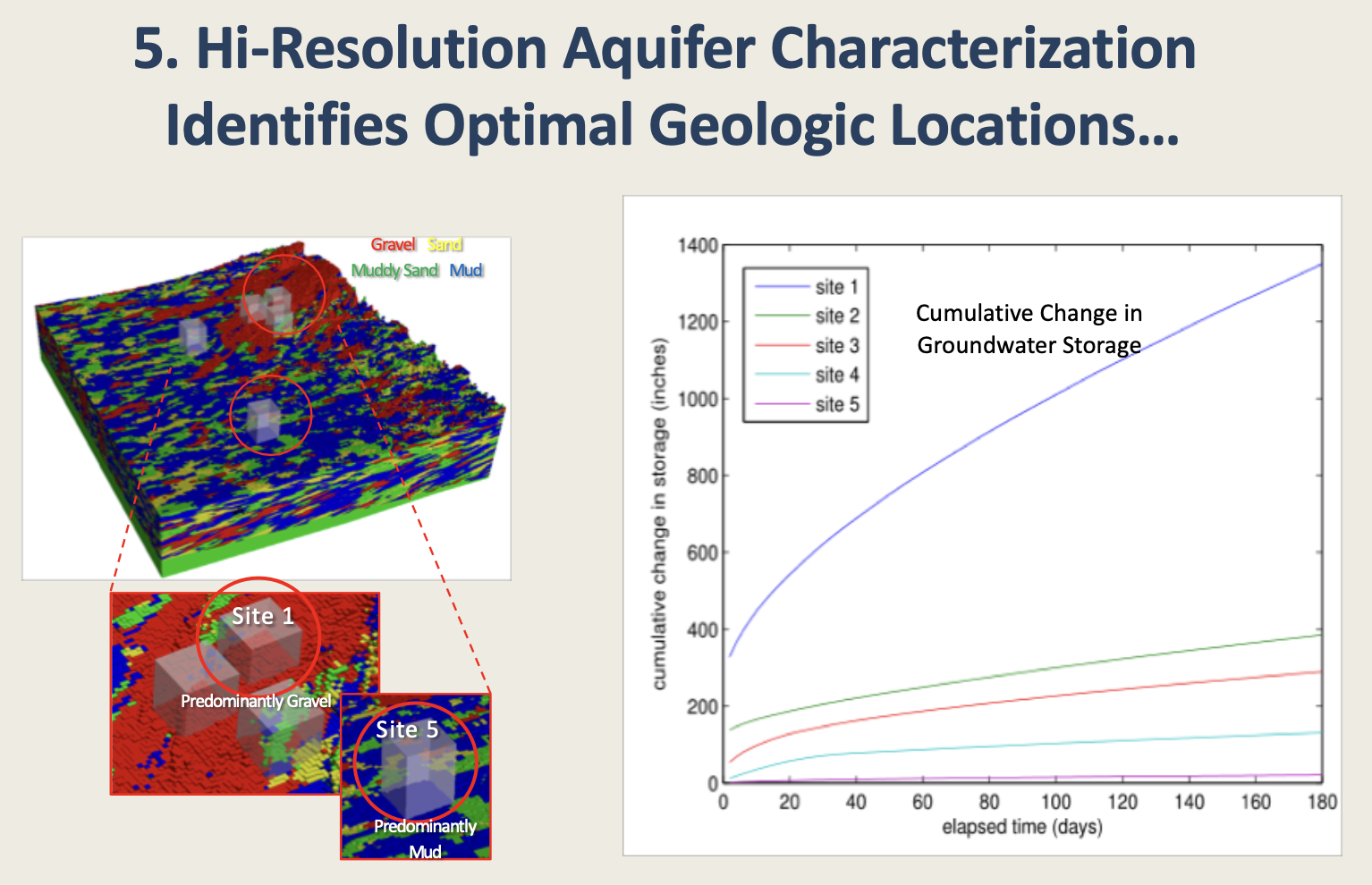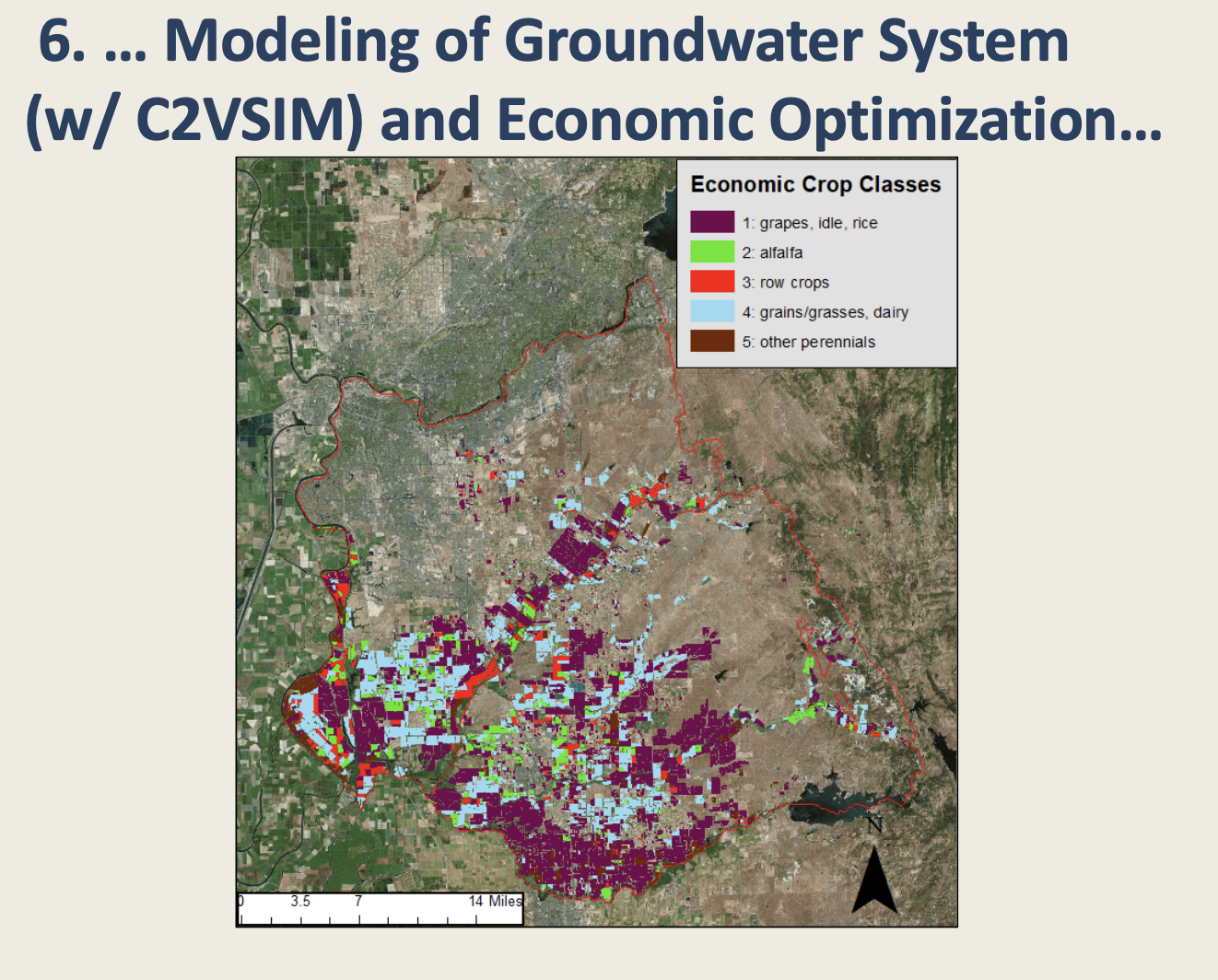| Full Description Text Body | Poster on a Flood-MAR case study in the American-Cosumnes basin presented at the 2018 American Geophysical Union meeting. The work combines reservoir reoperation, exploitation of the subsurface geology (fast paths for recharge), groundwater modeling, and economic analysis of risk to estimate Flood-MAR benefits for 1984-2003, including amounts of water available for recharge, amounts of water stored, increases in stream flow and benefits to adjacent basins in this historical reconstruction.
Abstract:
Water security hinges on water storage. Although the public and water resources planners habitually look to surface reservoirs for storage solutions, by far the largest ‘space’ to store water is underground. The very nature of freshwater distribution on Earth foreshadows future water storage solutions, as 97% of all circulating freshwater globally is in groundwater. Similarly, although 140 surface reservoirs in California can store 52 km3(42 MAF), in the Central Valley aquifer system there is room for another 170 km3( 140 MAF) owing to past depletion. Despite the state’s Mediterranean climate in which nearly all of the precipitation occurs between November and March when demand is lowest, historically massive snow storage and spring-summer snow melt synchronized well with surface reservoir replenishment during April-July. This system built around snow storage as a means of mitigating winter flood threats and delaying runoff until the beginning of the peak demand season is clearly demonstrating significant vulnerabilities to climate change and drought. Climate warming has already produced decades of declining snowmelt runoff, making surface reservoir storage more difficult. Moreover, as demonstrated during the 2012-16 drought, in the face of droughts longer than a few years, the surface storage offers inadequate long-term water security. This fact, the fact that California during pre-development times of the last millennium experienced far longer droughts, and ongoing climate change clearly indicate the need for a different strategy that more fully leverages both surface and subsurface storage. Kocis and Dahlke (2017) show that increasing winter runoff during wet and normal years provide enough high-magnitude flows to support a strategy of diverting flood flows for groundwater storage. This “flood-MAR” (managed aquifer recharge) approach will require a massive change in winter water and land management that exploits recharge opportunities on irrigated farm lands and in areas with suitable soils and subsurface geology. A case study in the American-Cosumnes Rivers portion of the Central Valley shows how total system water storage can be increased dramatically through diversion of high-magnitude flows and reoperation of both the surface and subsurface reservoirs including economic incentives.
Citation:
Fogg, G., Goharian, E., Gailey, R., Maples, S., & Sandoval Solis, S. (2019). Water Security, Drought and Climate Change: A California Perspective. Presented at Fall 2018 AGU Meeting. Abstract 2018AGUFM.H51J1429F. https://doi.org/10.1002/essoar.10500574.1.
|
|---|
| Featured Image Credit | Maples, S. R., Fogg, G. E., & Maxwell, R. M. (2019). Modeling managed aquifer recharge processes in a highly heterogeneous, semi-confined aquifer system. Hydrogeology Journal, 27(8), 2869–2888. https://doi.org/10.1007/s10040-019-02033-9 |
|---|
| Image 2 Photo Credit | Gailey, R. M., Fogg, G. E., Lund, J. R., & Medellin-Azuara, J. (2019). Maximizing on-farm groundwater recharge with surface reservoir releases: a planning approach and case study in California, USA. Hydrogeology Journal, 27(4), 1183–1206. https://doi.org/10.1007/s10040-019-01936-x |
|---|



